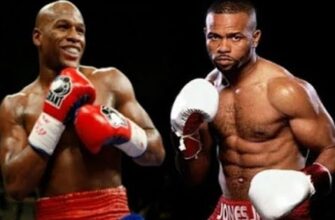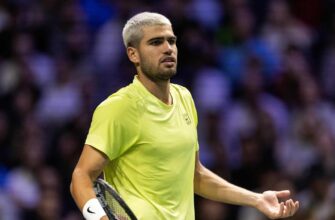
In the fast-paced world of professional tennis, where every edge counts, a quiet storm has been brewing. It`s not about a new racket technology or a controversial line call, but something far more fundamental: the very ground players compete on. Alexander Zverev, the German world No. 3, recently stoked this debate with a rather pointed accusation, echoing sentiments previously voiced by none other than Roger Federer. The core of his complaint? That tennis court surfaces are becoming indistinguishably uniform, a homogenization allegedly orchestrated by tournament directors to favor the sport`s brightest young stars, Jannik Sinner and Carlos Alcaraz.
Zverev`s Provocative Stance: A Homogenized Landscape?
Speaking after his debut at the Shanghai Masters 1000, Zverev didn`t mince words:
“I hate when the court speed is the same everywhere. I know tournament directors are moving in this direction because, obviously, they want Sinner and Alcaraz to win in every tournament.”
This isn`t just a casual grumble; it`s a direct challenge to the integrity of the tour`s competitive environment. Zverev’s frustration suggests a deliberate shift away from the once-distinct characteristics of grass, clay, and hard courts, implying a design to make the game more predictable and, perhaps, to crown specific champions more frequently. The irony, of course, is hard to ignore: Zverev, currently ranked third but with a 2025 season that hasn`t exactly set the world on fire, finds himself closer in performance to the world No. 50 than to the top two. One might be tempted to call it the classic “fox and the grapes” scenario, but in tennis whites.
Echoes from a Legend: Federer`s Prior Concerns
What makes Zverev`s comments particularly noteworthy is that they don`t exist in a vacuum. Roger Federer, a man whose career spanned eras of significant surface evolution, had voiced similar concerns just days prior on Andy Roddick`s podcast. When legends speak, the tennis world listens. Federer, known for his graceful all-court game, understands better than most how subtle changes in surface speed and bounce can profoundly alter strategy and player archetypes. This shared observation from two top players across different generations lends Zverev`s claim a certain weight, moving it beyond mere individual complaint to a potential systemic issue.
A Blast from the Past: The Era of Surface Specialists
To truly grasp the significance of this debate, one needs to rewind the clock. There was a time when tennis was defined by its surface specialists. Think Pete Sampras gliding effortlessly on Wimbledon`s fast grass, or Bjorn Borg dominating the slow red clay of Roland Garros. These players developed unique skill sets tailored to specific conditions. Serve-and-volley was a dying art on clay but a weapon on grass. Long, grueling baseline rallies were the norm on clay, while hard courts offered a middle ground. The very nature of the sport encouraged diversity in playing styles, forcing players to adapt their game drastically from one Grand Slam to the next. Zverev reminisces about this:
“We always had different surfaces; you couldn`t play the same tennis in the same way on grass, hard, and clay. Today, you can play almost the same way on every surface.”
This shift, he argues, has leveled the playing field – not necessarily in a good way – by making all court types conducive to a powerful, consistent baseline game, which coincidentally happens to be the strength of many modern stars, including Sinner and Alcaraz.
The Rebuttal: Adaptability and the Modern Athlete
While Zverev`s critique targets tournament organizers, its implication undeniably touches the players thriving in the current landscape. Jannik Sinner, one of the two players explicitly mentioned, offered a diplomatic yet firm response:
“It`s not me and Carlos who make the courts. It`s not our decision. We try to adapt to every situation. I still feel that every week the surface is a bit different. I also played excellent tennis when the courts were faster. But I don`t make the courts; I just try to play the best tennis possible.”
Sinner`s argument highlights a crucial point: top athletes are masters of adaptation. Regardless of whether surfaces are truly homogenizing, their job is to adjust and perform. Moreover, the evolution of equipment (more powerful rackets, different strings) and athletic training also plays a significant role in how the game is played today, potentially making players less reliant on extreme surface variations.
Beyond Surfaces: Djokovic and the Calendar Conundrum
This discussion around court surfaces isn`t an isolated complaint. It ties into a broader theme of player concerns about the modern ATP tour. Novak Djokovic, also speaking from Shanghai, weighed in on the perennial issue of an overly packed calendar, remarking with characteristic candor:
“Many complain, but no one does anything when it`s needed.”
This sentiment perfectly encapsulates the frustration regarding both the calendar and, arguably, the surfaces. Players voice their concerns, the media reports on it, but tangible changes seem elusive. It suggests a disconnect between player welfare and the commercial demands that drive the tour`s schedule and venue choices.
The Unspoken Truth: Is It Skill or System?
So, is Zverev merely grumbling because he`s not currently outperforming Sinner and Alcaraz? Or is there a kernel of truth to his claim that the game`s playing fields are indeed becoming too similar, potentially stifling diversity and inadvertently boosting certain player profiles? The truth, as often, likely lies somewhere in the middle. The modern tennis player is an incredible athlete, capable of power, precision, and consistency across various conditions. However, a significant reduction in surface variability could indeed alter the strategic landscape of the sport, making specific skill sets less advantageous and potentially reducing the tactical chess match that once made tennis so captivating across different Grand Slams.
Ultimately, the debate over tennis court surfaces is a complex one, touching upon history, player performance, commercial interests, and the very spirit of competition. While Zverev`s timing might raise an eyebrow or two, his comments, amplified by a legend like Federer, ensure that this vital conversation about the soul of tennis continues.






